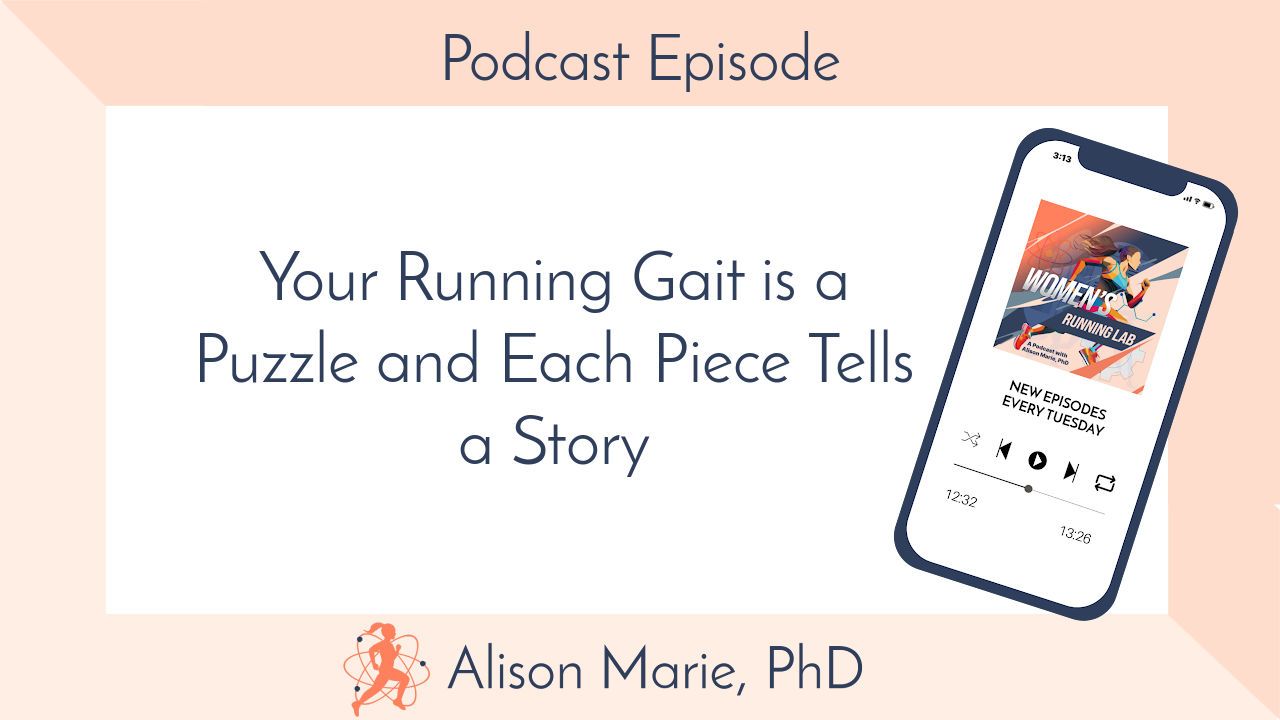
Episode 33 - Biomechanics of Running: Understanding Your Unique Gait
Apr 08, 2025Episode Summary:
In this episode, Alison explores the biomechanics of running, focusing on gait analysis and form cues. She emphasizes that runners shouldn't try to consciously alter their running mechanics mid-run, as the body cannot process adjustments quickly enough and doing so can create more issues. Instead, she uses gait analysis to inform strength training and warm-up drills that help improve stride efficiency over time. Alison highlights useful running cues like a forward lean from the ankles ("tits over toes"), gaze direction, and "push from the tush," but stresses that these are meant to be felt rather than actively executed during a run. She also explains how she analyzes gait from both side and back views, looking at factors such as stack alignment, foot strike, toe-off, and hip drop, and correlates these with posture and movement assessments done outside of running to inform training strategies. Alison explains how true pronation and supination are influenced not just by the foot, but by what's happening further up the kinetic chain, such as at the hips and torso. Wear patterns on running shoes and arm swing are presented as useful clues for identifying asymmetries or compensations in stride. Ultimately, she emphasizes that effective strength training and movement assessments should address the entire system—foot, hips, ribs, and rotation—in order to improve stride efficiency and reduce injury risk.
Key Takeaways:
- Foot Mechanics Reflect Whole-Body Patterns: Pronation and supination aren’t just foot issues—they often reflect what's happening at the hips, pelvis, and even ribcage. True pronation requires internal hip rotation, so improving stride often starts above the foot.
- Arm Swing Tells a Story: Arm movement can signal deeper issues—excessive swing may mean a lack of torso rotation, while minimal swing could point to too much uncontrolled rotation. Watching the arms is a quick way to spot imbalances.
- Shoe Wear Patterns Reveal Stride Habits: Looking at wear on well-used running shoes (not walking shoes) can indicate pronation or supination, and even show asymmetries between the right and left side of your stride.
- Strength Training Should Reflect Running Demands: Training movements that mimic running mechanics—especially those that emphasize controlled rotation, hip mobility, and foot control—can help improve stride efficiency without needing to consciously change how you run.
Time Stamps:
[00:00] - Understanding the "Stack" and Rotation
[07:50] - The Role of the Pelvis, Ribs, and Breathing
[15:10] - Foot Mechanics in the Stride
[23:40] - Analyzing Shoe Wear and Stride Asymmetries
[31:25] - Arm Swing and What It Reveals About Rotation
[39:45] - Integrating Strength Training to Improve Stride
Resources Mentioned:
- 1-on-1 Full Assessment and Strategy Session: Through my efficient postural and movement assessment (including gait analysis filmed by you ahead of time), we will identify the specific needs of your body (as they relate to your goals) and create a custom strategy so that you can continue to perform without pain.
- The Foot Fix: The premiere rehab program designed specifically for female runners struggling with plantar fasciitis, numbness and burning, Achilles issues, and chronically tight ankles and calves.
Quotes:
- "Once you start to see these patterns, you can’t unsee them."
- "It’s not just about the foot — it’s about how all the parts are connected in your stride."
Follow Along Between Episodes on Instagram and if you enjoyed this episode please give a share and tag me in your stories!
Don't miss a thing!
Join my newsletter, be the first to know about what's coming up, and get even more great content!

